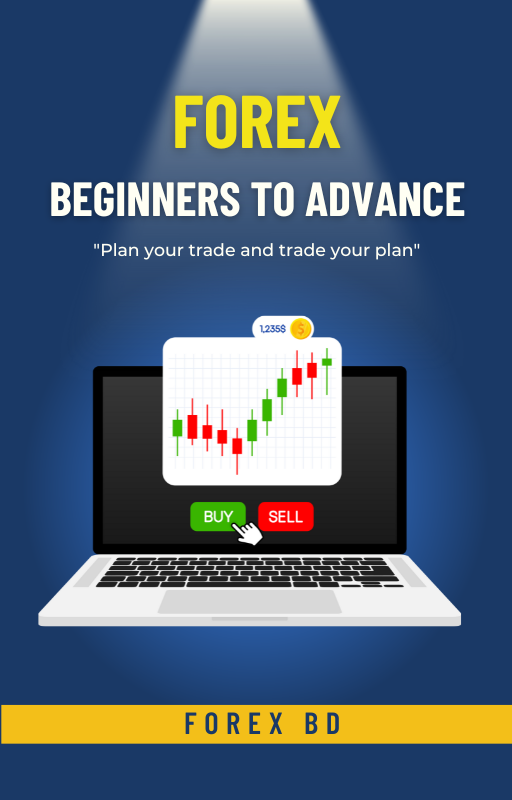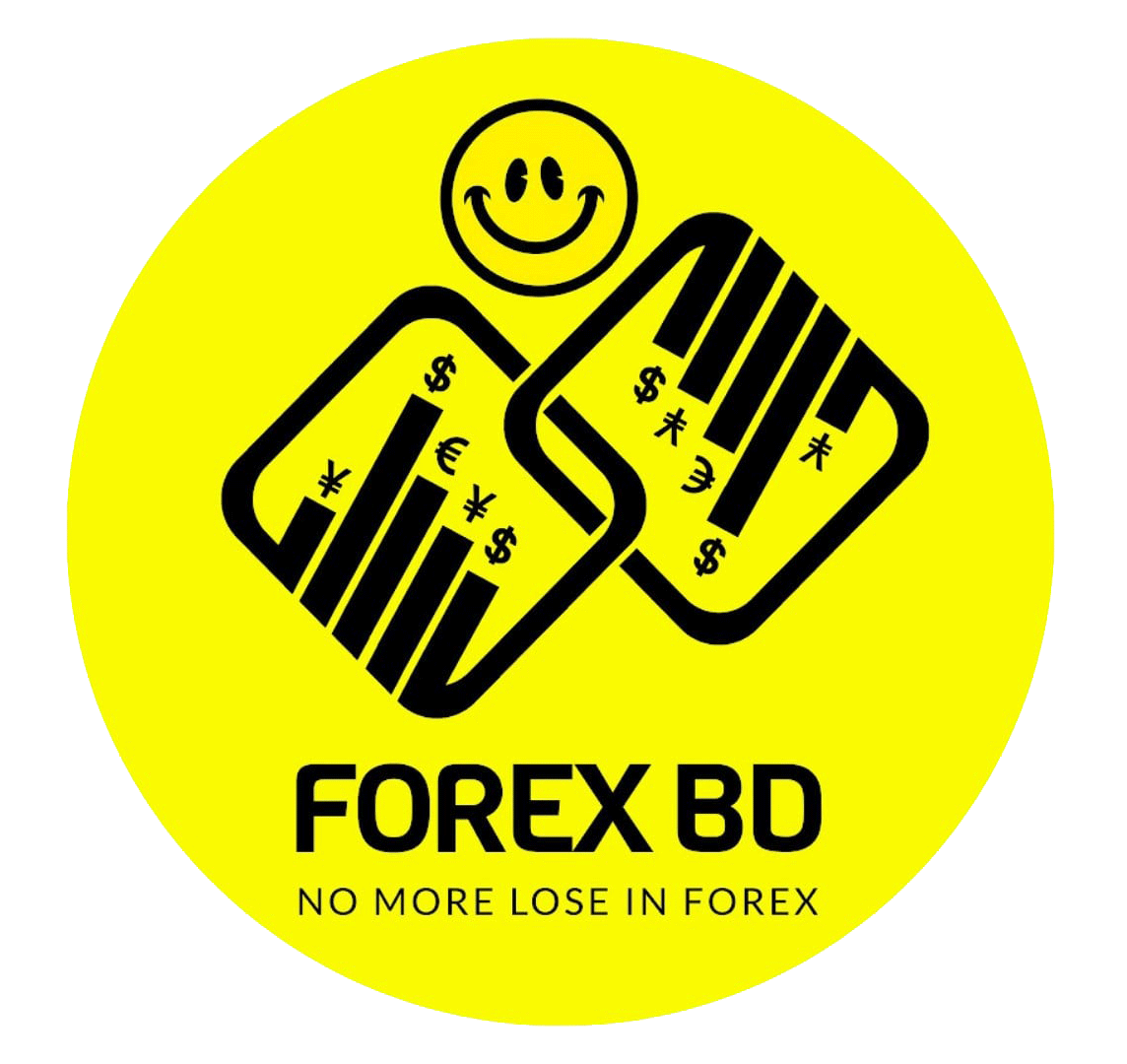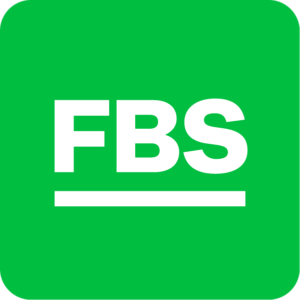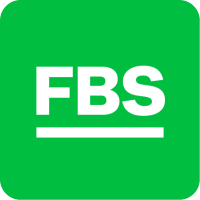Risk Warning: Trading on financial markets carries risks. Contracts for Difference (‘CFDs’) are complex financial products that are traded on margin. Trading CFDs carries a high level of risk since leverage can work both to your advantage and disadvantage. As a result, CFDs may not be suitable for all investors because you may lose all your invested capital. You should not risk more than you are prepared to lose. Before deciding to trade, you need to ensure that you understand the risks involved and take into account your investment objectives and level of experience.
Disclaimer : Forexbd.ltd is not encouraging anyone to do forex/stock trading, as there are investments and financial risks involved. ForexBD channel or videos are educational and informative. Before deciding to invest in the forex market, you should carefully consider your investment objectives, level of experience, and risk appetite.

Introduction to Forex BD
Forex trading is an incredibly lucrative yet complicated financial market, and learning how to navigate it can be overwhelming. That’s where Forex BD comes in, offering comprehensive educational content on all things Forex. In this article, we’ll dive into what Forex BD is, what sets it apart, and why you should tune in.
Table of Contents
- The Founders of Forex BD
- What is Forex BD?
- The Importance of Forex Education
- Forex BD’s Content
- Analyzing Forex Markets
- Forex Trading Strategies
- Technical Analysis
- Fundamental Analysis
- Risk Management
- Psychology of Trading
- Forex BD’s Community
- Conclusion
- FAQs
The Founders of Forex BD
Forex BD was founded by a group of passionate Forex traders who wanted to share their knowledge and experience with others. These individuals have years of experience in Forex trading and have successfully navigated the market’s ups and downs. They understand the complexities of the market and offer insights and strategies that have worked for them.
What is Forex BD?
Forex BD is a that provides educational content on Forex trading. The channel offers videos on various Forex topics, such as technical and fundamental analysis, trading strategies, risk management, and more. Forex BD aims to educate its viewers on how to navigate the Forex market and make profitable trades.
The Importance of Forex Education
Forex trading can be challenging for beginners, and it’s easy to make costly mistakes without proper education. Forex BD recognizes the importance of educating traders and offers educational content to help traders make informed decisions. Forex BD’s educational content is suitable for both beginners and experienced traders who want to improve their skills and knowledge.
Forex BD’s Content
Forex BD’s content is diverse and covers various Forex trading topics. The channel offers video content on technical and fundamental analysis, trading strategies, risk management, and more. The videos are well-structured, engaging, and easy to follow, making them suitable for traders of all levels.
Analyzing Forex Markets
Forex BD offers videos, Article, Book on technical and fundamental analysis, which are essential components of Forex trading. Technical analysis involves analyzing price charts to identify trends and make trading decisions, while fundamental analysis involves analyzing economic data and news events to understand the market’s direction.
Forex Trading Strategies
Forex BD offers videos, Article, Book and so on different Forex trading strategies, such as scalping, swing trading, and position trading. The channel explains each strategy in detail and provides examples of how to apply them in the market.
Technical Analysis
Forex BD offers videos, Article, Book and so on on technical analysis, covering various technical indicators, chart patterns, and price action analysis. Technical analysis helps traders identify trends and trading opportunities in the market.
Fundamental Analysis
Forex BD offers videos on fundamental analysis, covering economic indicators, news events, and market sentiment. Fundamental analysis helps traders understand the market’s direction and make informed trading decisions.
Risk Management
Forex trading involves risks, and managing those risks is crucial to long-term success. Forex BD offers videos on risk management, covering topics such as stop-loss orders, position sizing, and risk-reward ratios.
Psychology of Trading
Forex trading can be emotionally challenging, and understanding the psychology of trading is essential to success. Forex BD offers videos, Article, Book and so on on the psychology of trading, covering topics such as discipline, patience, and managing emotions.
Forex BD’s Community
Forex BD has a vibrant community of traders who engage with each other on the channel’s videos and social media platforms. The community provides an opportunity for traders to share their experiences, ask questions, and support each other.
Conclusion
Forex BD is an excellent resource for Forex traders of all levels. The channel offers comprehensive educational content on various Forex trading
Introduction:
Forex trading is one of the most lucrative and exciting financial markets in the world. With over $5 trillion traded daily, it provides an opportunity for individuals to make a substantial amount of money by buying and selling currencies. However, trading Forex can be risky, and without the proper knowledge and skills, traders may lose money ( Forex BD / BD Forex / ForexBD / ForexBDLTD / Forex bd LTD / @forexbd / Forex Bangladesh ).
The book “Forex Trading: From Beginners to Advance Level” is designed to provide readers with a comprehensive understanding of Forex trading. It is suitable for both beginners and experienced traders who want to learn or improve their trading skills.
In this book, we will start by discussing the basics of Forex trading, including what Forex trading is, how it works, and the different types of traders in the market. We will then move on to cover more advanced topics such as technical analysis, fundamental analysis, risk management, and trading psychology.
Throughout the book, we will provide practical examples, charts, and graphs to help readers understand the concepts and strategies we discuss. By the end of the book, readers will have the necessary knowledge and skills to start trading Forex confidently.
Chapter 1: Introduction to Forex Trading
In this chapter, we will introduce readers to Forex trading and provide an overview of the market. We will discuss the history of Forex trading, how it works, and the different types of Forex market participants. We will also cover the advantages and disadvantages of trading Forex and the factors that affect currency prices.
Chapter 2: Forex Trading Basics
In this chapter, we will cover the basics of Forex trading, including currency pairs, pip values, and lot sizes. We will also discuss the different types of Forex orders and how to execute them on a trading platform.
Chapter 3: Technical Analysis
In this chapter, we will introduce readers to technical analysis and its role in Forex trading. We will cover the different types of charts and indicators used in technical analysis and how to use them to make trading decisions.
Chapter 4: Fundamental Analysis
In this chapter, we will discuss fundamental analysis and its role in Forex trading. We will cover the economic indicators that affect currency prices and how to interpret them. We will also discuss how to use news events and geopolitical developments to inform trading decisions.
Chapter 5: Risk Management
In this chapter, we will discuss risk management and its importance in Forex trading. We will cover the different types of risk in Forex trading and how to manage them using stop-loss orders, position sizing, and risk-reward ratios.
Chapter 6: Trading Psychology
In this chapter, we will cover the psychological aspects of Forex trading. We will discuss the common biases and emotions that affect trading decisions and how to overcome them. We will also cover the importance of having a trading plan and sticking to it ( Forex BD / BD Forex / ForexBD / ForexBDLTD / Forex bd LTD / @forexbd / Forex Bangladesh ).
Chapter 7: Trading Strategies
In this chapter, we will introduce readers to some of the most popular Forex trading strategies. We will discuss trend following, range trading, and breakout trading strategies. We will also cover the importance of backtesting and optimizing trading strategies.
Chapter 8: Forex Trading Platforms
In this chapter, we will discuss Forex trading platforms and the different features they offer. We will cover the advantages and disadvantages of different platforms and how to choose the right one for your trading needs.
Chapter 9: Trading Tools
In this chapter, we will cover the different trading tools that traders can use to enhance their trading experience. We will discuss trading journals, trade analyzers, and trading calculators, among other tools.
Chapter 10: Forex Brokers
In this chapter, we will discuss Forex brokers and the different types of brokers available. We will cover the factors to consider when choosing a broker, such as regulation, spreads, and commissions.
Chapter 11: Trading Plan
In this chapter, we will discuss the importance of having a trading plan and how to create one. A trading plan is a written document that outlines your trading goals, strategies, risk management rules, and other important details. It helps you stay focused, disciplined, and consistent in your trading approach.
Chapter 12: Backtesting and Optimization
In this chapter, we will discuss the importance of backtesting and optimization in Forex trading. Backtesting is the process of testing a trading strategy on historical data to see how it would have performed in the past. Optimization is the process of adjusting the parameters of a trading strategy to improve its performance.
Chapter 13: Psychology and Discipline
In this chapter, we will discuss the role of psychology and discipline in Forex trading. Successful traders not only have a solid understanding of the market and trading strategies, but also have the right mindset and emotional control to deal with the challenges and uncertainties of trading.
Chapter 14: Advanced Trading Strategies
In this chapter, we will explore some advanced trading strategies that can be used by experienced traders to gain an edge in the Forex market. These strategies require a deeper understanding of the market dynamics, as well as a high level of skill and discipline ( Forex BD / BD Forex / ForexBD / ForexBDLTD / Forex bd LTD / @forexbd / Forex Bangladesh ).
Chapter 15: Trading Psychology and the Future of Forex Trading
In this final chapter, we will reflect on the role of trading psychology in the future of Forex trading, and the trends and innovations that are shaping the industry.

Chapter 1: Introduction to Forex Trading
Forex trading, also known as foreign exchange trading or currency trading, is the buying and selling of currencies on the global market. It is the largest and most liquid financial market in the world, with an estimated daily turnover of $6.6 trillion USD in 2022 (according to the Bank for International Settlements). Forex trading is open 24 hours a day, five days a week, and is accessible to individual traders through online platforms and brokers.
The goal of Forex trading is to profit from fluctuations in exchange rates between different currencies. For example, if a trader buys euros when the exchange rate is low and sells them when the rate is high, they can make a profit. However, this is easier said than done, as exchange rates can be affected by a wide range of factors, including economic data, political developments, and market sentiment.
Forex trading involves significant risks, including the possibility of losing all or part of your investment. It is important for traders to understand the risks involved and to have a solid understanding of market dynamics, trading strategies, and risk management techniques.
In this book, we will cover the key principles and strategies of Forex trading, from the basics of currency pairs and exchange rates to advanced trading techniques and risk management strategies. We will also explore the latest trends and developments in the Forex industry, including the impact of technology, sustainability, and geopolitical risk ( Forex BD / BD Forex / ForexBD / ForexBDLTD / Forex bd LTD / @forexbd / Forex Bangladesh ).
Whether you are a beginner looking to get started in Forex trading, or an experienced trader looking to refine your skills and stay ahead of the curve, this book will provide you with the knowledge and tools you need to succeed in this exciting and dynamic industry.
Chapter 2: Understanding Currency Pairs and Exchange Rates
In Forex trading, currencies are traded in pairs, with each pair representing the value of one currency in relation to another. The first currency in the pair is known as the base currency, while the second currency is the quote currency. For example, the EUR/USD pair represents the value of the euro in relation to the US dollar.
Exchange rates are the prices at which currencies are traded in the Forex market. They are determined by supply and demand, and can be affected by a wide range of factors, including economic data, political developments, and market sentiment.
Currency pairs can be divided into three categories: major pairs, minor pairs, and exotic pairs. Major pairs are the most widely traded and include the EUR/USD, USD/JPY, GBP/USD, and USD/CHF pairs. Minor pairs, also known as cross pairs, involve currencies from major economies other than the US dollar, such as the EUR/GBP or GBP/JPY pairs. Exotic pairs involve currencies from smaller or emerging economies, such as the USD/ZAR or AUD/NZD pairs.
Understanding currency pairs and exchange rates is essential for Forex trading, as it allows traders to analyze market trends and make informed trading decisions. Traders can use technical analysis tools, such as charts and indicators, to identify price patterns and trends, and fundamental analysis, which involves analyzing economic data and news events, to assess the underlying factors driving exchange rate movements( Forex BD / BD Forex / ForexBD / ForexBDLTD / Forex bd LTD / @forexbd / Forex Bangladesh ).
In the next chapter, we will discuss different trading styles and strategies, including day trading, swing trading, and position trading, and how to choose the approach that best suits your trading goals and personality.
Chapter 3: Trading Styles and Strategies
Forex trading offers a variety of trading styles and strategies to suit different goals, timeframes, and personalities. Here are some of the most common trading styles:
Day Trading: This involves opening and closing positions within the same trading day, with the goal of profiting from short-term price movements. Day traders typically use technical analysis tools, such as charts and indicators, to identify entry and exit points.
Swing Trading: This involves holding positions for several days or weeks, with the goal of profiting from medium-term price movements. Swing traders may use a combination of technical and fundamental analysis to identify potential trades.
Position Trading: This involves holding positions for several months or even years, with the goal of profiting from long-term trends. Position traders typically use fundamental analysis to assess the underlying factors driving currency movements.
Scalping: This involves opening and closing positions within seconds or minutes, with the goal of profiting from small price movements. Scalping requires a high level of skill and discipline, as traders need to make quick decisions and manage risk effectively.
Algorithmic Trading: This involves using computer algorithms to execute trades automatically based on pre-defined criteria. Algorithmic trading can be used for a variety of trading styles and strategies, and is particularly useful for high-frequency trading.
No matter which trading style you choose, it is important to have a solid understanding of market dynamics, risk management techniques, and trading psychology. Traders should also develop a trading plan and stick to it, while being open to adjusting their strategy as market conditions change.
In the next chapter, we will explore different types of technical analysis tools and how to use them to analyze market trends and identify potential trading opportunities.
Chapter 4: Technical Analysis Tools
Technical analysis is a popular approach to Forex trading that involves analyzing historical price data and using it to identify patterns and trends that can be used to predict future price movements. Here are some of the most common technical analysis tools used by Forex traders:
Charts: Charts are visual representations of price data over time, and can be used to identify trends, support and resistance levels, and other important price levels. There are several types of charts, including line charts, bar charts, and candlestick charts.
Indicators: Indicators are mathematical calculations based on price and/or volume data that can be used to identify trends, momentum, and other important market signals. Some popular indicators used by Forex traders include moving averages, relative strength index (RSI), and stochastic oscillator.
Fibonacci Retracements: Fibonacci retracements are based on the idea that price movements tend to retrace a predictable portion of their previous move before continuing in the original direction. Fibonacci retracements can be used to identify potential support and resistance levels.
Japanese Candlesticks: Japanese candlesticks are a popular type of chart used in technical analysis that can provide valuable information about price trends and momentum. Candlesticks are comprised of a body and two wicks, and can be used to identify bullish or bearish patterns.
Pattern Recognition: Pattern recognition involves identifying chart patterns, such as head and shoulders or double tops and bottoms, that can provide insight into potential price movements. These patterns can be used to identify potential entry and exit points for trades ( Forex BD / BD Forex / ForexBD / ForexBDLTD / Forex bd LTD / @forexbd / Forex Bangladesh ).
It is important to note that no single technical analysis tool is foolproof, and traders should use a combination of tools to confirm their analysis and identify potential trading opportunities. Additionally, traders should be aware of the limitations of technical analysis, and use other forms of analysis, such as fundamental analysis, to complement their trading strategy.
In the next chapter, we will explore different risk management techniques that traders can use to limit their exposure to market volatility and protect their trading capital.

Chapter 5: Risk Management Techniques
Forex trading involves a high degree of risk, and it is important for traders to manage their risk effectively in order to protect their trading capital. Here are some risk management techniques that traders can use to limit their exposure to market volatility:
Stop Loss Orders: Stop loss orders are orders placed with a broker to sell a position if it reaches a certain price level. This can be used to limit potential losses on a trade.
Take Profit Orders: Take profit orders are orders placed with a broker to close a position at a certain price level. This can be used to lock in profits on a trade ( Forex BD / BD Forex / ForexBD / ForexBDLTD / Forex bd LTD / @forexbd / Forex Bangladesh ).
Risk/Reward Ratio: The risk/reward ratio is a calculation that compares the potential reward of a trade to the potential risk. Traders should aim for a risk/reward ratio of at least 1:2, meaning the potential reward should be at least twice as large as the potential risk.
Position Sizing: Position sizing involves calculating the appropriate amount of capital to allocate to each trade based on the trader’s risk tolerance and trading strategy. Traders should avoid over-leveraging their trades, which can lead to large losses.
Diversification: Diversification involves spreading out your trading capital across multiple positions and/or asset classes in order to reduce the overall risk. This can be achieved by trading different currency pairs, or by combining Forex trading with other investment vehicles, such as stocks or bonds ( Forex BD / BD Forex / ForexBD / ForexBDLTD / Forex bd LTD / @forexbd / Forex Bangladesh ).
It is important for traders to develop a risk management plan that suits their individual trading style and goals. Traders should also be prepared to adapt their risk management strategy as market conditions change.
In the next chapter, we will explore the role of fundamental analysis in Forex trading, and how traders can use it to identify potential trading opportunities based on economic and political events.
Chapter 6: Fundamental Analysis
Fundamental analysis is a method of analyzing the intrinsic value of an asset based on its economic, financial, and qualitative factors. In Forex trading, fundamental analysis is used to evaluate the underlying economic and political factors that can affect the value of a currency.
There are several key economic indicators that traders should pay attention to when conducting fundamental analysis, including:
Gross Domestic Product (GDP): GDP is a measure of the economic activity of a country, and is one of the most important indicators for Forex traders. A strong GDP indicates a healthy economy, which can lead to a stronger currency.
Inflation: Inflation is the rate at which the general level of prices for goods and services is rising, and is another important indicator for Forex traders. High inflation can lead to a devaluation of a currency, while low inflation can lead to a stronger currency ( Forex BD / BD Forex / ForexBD / ForexBDLTD / Forex bd LTD / @forexbd / Forex Bangladesh ).
Interest Rates: Interest rates can have a significant impact on the value of a currency, as they can affect the flow of capital into or out of a country. Higher interest rates can attract foreign investment, which can lead to a stronger currency.
Employment Data: Employment data, such as non-farm payrolls, can provide insights into the health of a country’s economy. Strong employment data can lead to a stronger currency.
Political Events: Political events, such as elections or geopolitical tensions, can also have a significant impact on the value of a currency.
Traders can use fundamental analysis to identify potential trading opportunities based on economic and political events. For example, if a country’s GDP is growing at a strong rate, a trader may consider buying that country’s currency. Similarly, if a country’s central bank raises interest rates, a trader may consider buying that country’s currency.
However, it is important to note that fundamental analysis can be subjective and is not always a reliable predictor of market movements. Traders should always use a combination of fundamental and technical analysis to make informed trading decisions ( Forex BD / BD Forex / ForexBD / ForexBDLTD / Forex bd LTD / @forexbd / Forex Bangladesh ).
In the next chapter, we will explore the role of technical analysis in Forex trading, and how traders can use it to identify potential trading opportunities based on price action and market trends.
Chapter 7: Technical Analysis
Technical analysis is a method of analyzing market data, such as price and volume, to identify potential trading opportunities. In Forex trading, technical analysis is used to identify trends, support and resistance levels, and potential entry and exit points.
There are several key tools and techniques used in technical analysis, including:
Chart Patterns: Chart patterns, such as triangles, head and shoulders, and flags, can provide insights into market trends and potential price movements.
Technical Indicators: Technical indicators, such as moving averages, relative strength index (RSI), and stochastic oscillators, can help traders identify potential buy or sell signals based on price and volume data.
Candlestick Charts: Candlestick charts provide a visual representation of price movements over a period of time, and can help traders identify patterns and potential trading opportunities ( Forex BD / BD Forex / ForexBD / ForexBDLTD / Forex bd LTD / @forexbd / Forex Bangladesh ).
Traders can use technical analysis to identify potential entry and exit points based on market trends and price action. For example, if a currency pair is trading in a bullish trend and breaks through a key resistance level, a trader may consider buying that currency pair.
However, it is important to note that technical analysis is not always a reliable predictor of market movements, and should be used in conjunction with fundamental analysis and risk management strategies.
In the next chapter, we will explore risk management strategies that traders can use to minimize potential losses and maximize potential profits in Forex trading.
Chapter 8: Risk Management
Risk management is an essential component of successful Forex trading. By implementing effective risk management strategies, traders can minimize potential losses and maximize potential profits.
There are several key risk management strategies that traders can use, including:
Stop Loss Orders: A stop loss order is a type of order that automatically closes a trade when the price reaches a certain level. By using stop loss orders, traders can limit their potential losses and protect their trading capital.
Position Sizing: Position sizing involves determining the appropriate amount of capital to risk on each trade based on the trader’s account size and risk tolerance. By properly sizing positions, traders can avoid overexposure to market risk.
Risk-to-Reward Ratio: The risk-to-reward ratio is the ratio of the potential profit of a trade to the potential loss. By only taking trades with a favorable risk-to-reward ratio, traders can increase their chances of success and minimize potential losses ( Forex BD / BD Forex / ForexBD / ForexBDLTD / Forex bd LTD / @forexbd / Forex Bangladesh ).
Diversification: Diversification involves spreading risk across multiple trades and markets. By diversifying their trading portfolios, traders can reduce their exposure to market volatility and potential losses.
It is important for traders to establish a risk management plan before entering into any trades. By identifying potential risks and implementing appropriate risk management strategies, traders can increase their chances of success in Forex trading.
In the next chapter, we will explore the importance of psychology in Forex trading, and how traders can manage their emotions and mindset to make rational trading decisions.
Chapter 9: Psychology in Forex Trading
Psychology plays a crucial role in Forex trading. Traders who are able to manage their emotions and maintain a rational mindset are more likely to make successful trades and avoid costly mistakes.
One of the key emotions that traders must manage is fear. Fear can lead to hesitation, causing traders to miss out on potential opportunities or exit trades prematurely. It can also lead to overtrading and taking unnecessary risks.
Another emotion that traders must manage is greed. Greed can lead to taking on excessive risk and holding onto losing trades in the hope that they will turn around. This can result in significant losses and damage to the trader’s account.
To manage their emotions and maintain a rational mindset, traders can use several techniques, including:
Develop a Trading Plan: Having a well-defined trading plan can help traders stay focused and avoid impulsive decisions.
Practice Discipline: Traders must be disciplined and stick to their trading plan, even when emotions are running high.
Keep a Trading Journal: Keeping a record of trades and emotions can help traders identify patterns and areas for improvement.
Take Breaks: Taking regular breaks from trading can help traders maintain a clear and focused mindset ( Forex BD / BD Forex / ForexBD / ForexBDLTD / Forex bd LTD / @forexbd / Forex Bangladesh ).
Seek Support: Talking to other traders or a professional can help traders manage their emotions and maintain a positive mindset.
By managing their emotions and maintaining a rational mindset, traders can increase their chances of success in Forex trading. In the next chapter, we will explore the importance of education and continuous learning in Forex trading.

Chapter 10: Education and Continuous Learning in Forex Trading
Forex trading is a dynamic and ever-changing field. To be successful, traders must constantly adapt and learn new skills and strategies. Education and continuous learning are key components of successful Forex trading.
There are several ways that traders can educate themselves and continue learning, including:
Reading Trading Books: There are countless books on Forex trading, ranging from beginner guides to advanced strategies. Traders can learn from the experiences and insights of successful traders and experts in the field.
Taking Online Courses: Many online courses offer in-depth training on Forex trading, including technical analysis, fundamental analysis, risk management, and more.
Attending Webinars and Seminars: Webinars and seminars provide an opportunity for traders to learn from experienced traders and experts in real-time. They can also interact with other traders and ask questions.
Practice Trading with Demo Accounts: Demo accounts provide a risk-free environment for traders to practice their skills and test new strategies without risking their own capital.
Join Trading Communities: Joining online trading communities can provide access to a wealth of information and resources, as well as an opportunity to interact with other traders and learn from their experiences ( Forex BD / BD Forex / ForexBD / ForexBDLTD / Forex bd LTD / @forexbd / Forex Bangladesh ).
By continuously educating themselves and learning new skills and strategies, traders can stay ahead of the curve and increase their chances of success in Forex trading. In the next chapter, we will explore the importance of choosing the right broker and trading platform.
Chapter 11: Trading Plan
In this chapter, we will discuss the importance of having a trading plan and how to create one. A trading plan is a written document that outlines your trading goals, strategies, risk management rules, and other important details. It helps you stay focused, disciplined, and consistent in your trading approach.
We will cover the different components of a trading plan, such as:
Trading Goals: You need to have clear and specific goals for your trading, such as the amount of money you want to make, the percentage of winning trades you aim for, and the timeframe you want to achieve your goals.
Trading Strategies: You need to have a set of trading strategies that suit your personality, risk tolerance, and market conditions. You can use the strategies we discussed in Chapter 7 or develop your own based on your analysis and experience.
Risk Management Rules: You need to have clear rules for managing your risks, such as the maximum percentage of your account you are willing to risk per trade, the stop-loss and take-profit levels you use, and the position sizing formula you follow.
Trading Journal: You need to keep a record of your trades, including the entry and exit points, the reason for entering the trade, the outcome, and any notes or observations you have. This will help you track your progress, identify your strengths and weaknesses, and improve your performance.
Trading Routine: You need to have a routine for your trading activities, such as the time of day you trade, the market sessions you focus on, and the tools and resources you use. This will help you stay organized and disciplined, and avoid overtrading or missing opportunities ( Forex BD / BD Forex / ForexBD / ForexBDLTD / Forex bd LTD / @forexbd / Forex Bangladesh ).
Evaluation and Improvement: You need to regularly evaluate your trading performance, identify areas for improvement, and make necessary adjustments to your trading plan. This will help you stay flexible and adapt to changing market conditions and your evolving trading skills ( Forex BD / BD Forex / ForexBD / ForexBDLTD / Forex bd LTD / @forexbd / Forex Bangladesh ).
By the end of this chapter, readers will have a clear understanding of the importance of having a trading plan and how to create one that suits their trading style and goals.
Chapter 12: Backtesting and Optimization
In this chapter, we will discuss the importance of backtesting and optimization in Forex trading. Backtesting is the process of testing a trading strategy on historical data to see how it would have performed in the past. Optimization is the process of adjusting the parameters of a trading strategy to improve its performance.
We will cover the steps involved in backtesting and optimization, such as:
Collecting Historical Data: You need to gather historical data for the currency pairs you want to trade, including the opening and closing prices, the high and low prices, and the volume and volatility levels.
Selecting a Backtesting Platform: You need to choose a backtesting platform that suits your needs, such as MetaTrader 4 or 5, TradingView, or Amibroker. These platforms allow you to import historical data and test your trading strategies using different settings and parameters.
Running the Backtest: You need to run the backtest using your chosen trading strategy and settings. The backtesting platform will provide you with a report that shows the performance of your strategy in terms of profit and loss, win rate, risk-reward ratio, and other metrics.
Analyzing the Results: You need to analyze the results of your backtest to identify the strengths and weaknesses of your trading strategy. You can use the performance report to adjust your strategy and settings, and improve your trading performance ( Forex BD / BD Forex / ForexBD / ForexBDLTD / Forex bd LTD / @forexbd / Forex Bangladesh ).
Optimizing the Strategy: You can use optimization tools to adjust the parameters of your trading strategy and find the optimal settings that maximize its performance. You need to be careful not to over-optimize your strategy, as this can lead to curve-fitting and unrealistic results
Chapter 13: Psychology and Discipline
In this chapter, we will discuss the role of psychology and discipline in Forex trading. Successful traders not only have a solid understanding of the market and trading strategies, but also have the right mindset and emotional control to deal with the challenges and uncertainties of trading.
We will cover the following topics:
Mindset: You need to have a positive and proactive mindset towards trading, focusing on the opportunities rather than the risks, and being open to learning and improving your skills.
Emotional Control: You need to manage your emotions and avoid making impulsive or irrational decisions based on fear, greed, or other negative emotions. You can use techniques such as deep breathing, visualization, and meditation to stay calm and focused during trading.
Risk Management: You need to have a disciplined approach to risk management, following your trading plan and using appropriate risk management tools such as stop-loss orders, position sizing, and risk-reward ratios.
Patience and Persistence: You need to have the patience and persistence to stick to your trading plan and strategies, even during periods of losses or drawdowns. You should also be prepared to adapt and improve your strategies over time, based on your experience and feedback ( Forex BD / BD Forex / ForexBD / ForexBDLTD / Forex bd LTD / @forexbd / Forex Bangladesh ).
Learning and Improvement: You need to be constantly learning and improving your skills as a trader, whether through reading books and articles, attending seminars and webinars, or interacting with other traders and mentors. This will help you stay up-to-date with the latest market trends and technologies, and avoid becoming complacent or stagnant.
By the end of this chapter, readers will understand the importance of psychology and discipline in Forex trading, and have some practical tips and techniques for developing a healthy and effective trading mindset.
Chapter 14: Advanced Trading Strategies
In this chapter, we will explore some advanced trading strategies that can be used by experienced traders to gain an edge in the Forex market. These strategies require a deeper understanding of the market dynamics, as well as a high level of skill and discipline.
We will cover the following strategies:
Scalping: This is a short-term trading strategy that aims to profit from small price movements in the market, often using high leverage and fast execution.
News Trading: This is a strategy that focuses on trading around major news events and economic indicators, such as interest rate decisions, GDP reports, and employment data.
Swing Trading: This is a medium-term trading strategy that aims to capture the market trends and momentum, often using technical analysis tools such as moving averages and trend lines.
Position Trading: This is a long-term trading strategy that aims to benefit from the fundamental factors that drive the currency markets, such as interest rates, inflation, and geopolitical events.
Algorithmic Trading: This is a strategy that uses computer programs and algorithms to automate the trading process, based on predefined rules and conditions. It requires advanced programming and technical skills, as well as access to specialized software and infrastructure ( Forex BD / BD Forex / ForexBD / ForexBDLTD / Forex bd LTD / @forexbd / Forex Bangladesh ).
By the end of this chapter, readers will have a deeper understanding of these advanced trading strategies, and be able to evaluate their suitability and effectiveness for their own trading style and goals.
Chapter 15: Trading Psychology and the Future of Forex Trading
In this final chapter, we will reflect on the role of trading psychology in the future of Forex trading, and the trends and innovations that are shaping the industry.
We will discuss the following topics:
Artificial Intelligence and Machine Learning: These technologies are transforming the way trading is done, by enabling faster and more accurate analysis of market data, and automating the decision-making process.
Social Trading and Copy Trading: These platforms allow traders to follow and copy the trades of other successful traders, and to share their own strategies and performance with the community.
Sustainable and Ethical Trading:
As the world becomes more conscious of sustainability and ethical issues, there is a growing interest in Forex trading that aligns with these values, such as investing in green technologies or avoiding companies with poor environmental or social records.
Trading Psychology and Mental Health: There is a growing awareness of the importance of mental health and well-being in trading, and the need for traders to take care of their physical and emotional health, and to seek professional help if needed ( Forex BD / BD Forex / ForexBD / ForexBDLTD / Forex bd LTD / @forexbd / Forex Bangladesh ).
Globalization and Geopolitical Risk: Forex trading is increasingly affected by global events and political developments, such as trade wars, Brexit, and the COVID-19 pandemic, which can create volatility and uncertainty in the markets.
By understanding these trends and developments, traders can better position themselves for success in the future of Forex trading, while also staying true to their values and priorities.
In conclusion, Forex trading offers a unique opportunity for investors to participate in the global currency markets, and to potentially profit from fluctuations in exchange rates. However, it also requires a deep understanding of the market dynamics, as well as discipline, patience, and psychological resilience. By following the principles and strategies outlined in this book, readers can develop the skills and mindset needed to become successful Forex traders, and to navigate the challenges and opportunities of this exciting and dynamic industry ( Forex BD / BD Forex / ForexBD / ForexBDLTD / Forex bd LTD / @forexbd / Forex Bangladesh ).
Chapter 16: Choosing the Right Broker and Trading Platform
One of the most important decisions a trader will make is choosing the right broker and trading platform. A broker acts as the intermediary between the trader and the market, executing trades on their behalf. A trading platform is the software used to place trades and monitor the market.
There are several factors that traders should consider when choosing a broker and trading platform, including:
Regulation: Traders should choose a broker that is regulated by a reputable regulatory agency, such as the Financial Conduct Authority (FCA) in the UK or the National Futures Association (NFA) in the US. Regulation ensures that the broker operates within a certain set of rules and provides a level of protection for traders.
Trading Platform: Traders should choose a trading platform that is user-friendly and meets their trading needs. Some platforms are geared towards beginners, while others are more advanced and offer a wider range of tools and features.
Spreads and Fees: Traders should choose a broker with competitive spreads and fees. High spreads and fees can eat into profits, so it’s important to compare rates from different brokers ( Forex BD / BD Forex / ForexBD / ForexBDLTD / Forex bd LTD / @forexbd / Forex Bangladesh ).
Customer Support: Traders should choose a broker with good customer support. This is especially important for new traders who may need help navigating the trading platform or executing trades.
Reputation: Traders should choose a broker with a good reputation in the industry. This can be determined by reading reviews and checking the broker’s history and track record.
By taking the time to research and choose the right broker and trading platform, traders can minimize their risks and increase their chances of success in Forex trading. In the next chapter, we will explore the importance of risk management in Forex trading ( Forex BD / BD Forex / ForexBD / ForexBDLTD / Forex bd LTD / @forexbd / Forex Bangladesh ).
Chapter 17: Risk Management in Forex Trading
Forex trading can be a high-risk activity, and traders must have a solid understanding of risk management to succeed in the long run. Risk management is the process of identifying, assessing, and controlling risks in order to minimize losses and maximize profits.
There are several risk management strategies that traders can use to manage their risk, including:
Stop Loss Orders: A stop loss order is an order placed with a broker to automatically sell a currency pair when it reaches a certain price. This helps limit losses and protect profits.
Position Sizing: Traders should only risk a small percentage of their trading account on each trade. This ensures that losses are limited and that traders can withstand losing streaks.
Diversification: Traders should diversify their trading portfolio by trading different currency pairs and using different trading strategies. This helps spread risk and reduces the impact of any single loss.
Risk-to-Reward Ratio: Traders should always aim for a risk-to-reward ratio of at least 1:2. This means that the potential reward on a trade should be at least twice the potential risk.
Trading Plan: Traders should have a clear trading plan that outlines their strategy, entry and exit points, and risk management rules. This helps traders stay disciplined and avoid impulsive trades.
It’s important to remember that risk management cannot completely eliminate the risk of trading, but it can help traders manage their risk and minimize their losses. By using these risk management strategies, traders can increase their chances of success in Forex trading.
In the next chapter, we will explore the importance of developing a trading strategy and the key components of a successful strategy.
Chapter 18: Developing a Trading Strategy
A trading strategy is a set of rules and guidelines that a trader uses to make trading decisions. A successful trading strategy should take into account a trader’s goals, risk tolerance, and market conditions.
There are several key components to developing a trading strategy:
Market Analysis: Traders should analyze the market to identify trends, support and resistance levels, and other key indicators that can influence trading decisions.
Entry and Exit Points: Traders should have clear rules for entering and exiting trades based on their analysis of the market.
Risk Management: Traders should have clear rules for managing risk, including setting stop loss orders and limiting the size of their positions.
Trading Plan: Traders should have a clear trading plan that outlines their strategy, entry and exit points, and risk management rules.
Backtesting: Traders should test their strategy on historical data to ensure that it performs well in different market conditions.
Monitoring and Adjusting: Traders should monitor their strategy and make adjustments as necessary based on changes in market conditions or their own performance ( Forex BD / BD Forex / ForexBD / ForexBDLTD / Forex bd LTD / @forexbd / Forex Bangladesh ).
Developing a trading strategy takes time and effort, but it is essential for success in Forex trading. A well-designed trading strategy can help traders make informed decisions and increase their chances of profitability.
In the next chapter, we will explore some of the common mistakes that traders make and how to avoid them.
Chapter 19: Common Trading Mistakes and How to Avoid Them
Even the most experienced traders make mistakes from time to time. However, by identifying and avoiding common trading mistakes, traders can increase their chances of success in Forex trading. In this chapter, we will discuss some of the common trading mistakes and how to avoid them.
Emotional Trading: One of the most common trading mistakes is letting emotions drive trading decisions. Fear, greed, and other emotions can cause traders to make impulsive decisions that are not based on market analysis. To avoid emotional trading, traders should develop a trading plan and stick to it.
Overtrading: Overtrading is another common mistake that can lead to losses. Traders who make too many trades, or trade too frequently, can become overwhelmed and lose sight of their strategy. To avoid overtrading, traders should focus on high-quality trades that meet their criteria and only trade when the market conditions are favorable.
Not Using Stop Loss Orders: Stop loss orders are essential for managing risk in Forex trading. Traders who do not use stop loss orders risk losing more than they can afford in a single trade. To avoid this mistake, traders should always use stop loss orders and adjust them as necessary based on market conditions ( Forex BD / BD Forex / ForexBD / ForexBDLTD / Forex bd LTD / @forexbd / Forex Bangladesh ).
Ignoring Risk Management: Risk management is a critical component of successful Forex trading. Traders who do not have a clear risk management plan in place are at risk of losing more than they can afford. To avoid this mistake, traders should develop a clear risk management plan that includes setting stop loss orders, limiting position sizes, and monitoring their account balance.
Failing to Learn from Mistakes: Finally, traders who do not learn from their mistakes are at risk of repeating them. To avoid this mistake, traders should review their trading history regularly and identify areas where they could have made better decisions.
By avoiding these common trading mistakes and following a clear trading plan, traders can increase their chances of success in Forex trading. In the final chapter, we will review the key concepts covered in this book and provide some final thoughts on Forex trading.
Chapter 20: Conclusion
In this book, we have covered a range of topics related to Forex trading, including the basics of the Forex market, fundamental and technical analysis, trading strategies, and risk management. By understanding these key concepts, traders can develop a solid foundation for successful Forex trading.
It is important to remember that Forex trading is not a get-rich-quick scheme. It requires discipline, patience, and a willingness to learn from both successes and failures. Traders who approach Forex trading with a clear trading plan, a sound risk management strategy, and a willingness to adapt to changing market conditions are more likely to achieve long-term success.
In conclusion, Forex trading can be a rewarding and exciting way to invest in the global financial markets. With the right knowledge, tools, and mindset, traders can achieve their financial goals and build a profitable trading career. We hope that this book has provided a helpful introduction to Forex trading and wish you success in your trading endeavors ( Forex BD / BD Forex / ForexBD / ForexBDLTD / Forex bd LTD / @forexbd / Forex Bangladesh ).
Additional Notes:
It is important to keep in mind that Forex trading is a high-risk activity and there is always the possibility of losing money. Traders should only invest funds that they can afford to lose and should never trade with money that is needed for essential expenses.
Additionally, traders should be aware of the importance of maintaining a balanced and healthy lifestyle. Forex trading can be mentally and emotionally demanding, and it is important to take breaks and practice self-care to avoid burnout and maintain a clear and focused mindset.
Lastly, traders should also stay up-to-date with market news and events that can impact the Forex market. By keeping a close eye on economic indicators, political developments, and global events, traders can adjust their trading strategies and make informed decisions ( Forex BD / BD Forex / ForexBD / ForexBDLTD / Forex bd LTD / @forexbd / Forex Bangladesh ).
We hope that this book has provided valuable insights into Forex trading and wish you success in your trading journey. Remember, success in Forex trading is not only about making profitable trades but also about learning from mistakes, managing risk, and maintaining a disciplined and focused approach to trading. With dedication and hard work, traders can achieve their financial goals and build a successful trading career.
Copyright © 2023 Forex BD
Name
Details
Rating
Regulation: CySEC, FCA, DFSA, FSCA, FSA, CMA
Founded: 2008
Founders: Petr Valov, Igor Lychagov
Year Founded : 2008
Deposit Methods: VISA, MasterCard, Neteller, Skrill, WM, PM, Crypto (MORE)
Leverage: 1:30 | 1:500
Regulation: CySEC, FCA, DFSA, FSCA, FSA.
Min. Deposit: 5 US$
Min. Withdraw : 5 US$
HQ: Sydney, Australia
Platforms: MT4, MT5, ctrader, web trading
Found in: January 30, 2007
Deposit Methods: Bank Wire (BankTransfer), VISA, MasterCard, Neteller, Skrill, WM, PM, Crypto
Year Founded : 2010
Cryptocurrencies:
 Yes
YesDeposit Methods: Local Deposit, Bank Wire (BankTransfer), VISA, MasterCard, Neteller, Skrill, WM, PM, Crypto, USDT
Year Founded : 2010
Cryptocurrencies: (5+) Bitcoin, Litecoin, Ethereum
Deposit Methods: Local Deposit, Bank Wire (BankTransfer), VISA, MasterCard, Neteller, Skrill, WM, PM, Crypto, USDT (MORE)
Year Founded : 2009
Cryptocurrencies:



Deposit Methods: Bank Wire (BankTransfer/SWIFT), VISA, MasterCard, Alipay, Bitcoin, Bitcoin Cash, Boleto, Ether/Ethereum, Litecoin, Local Bank Deposits, M-Pesa, Mobile Money, Monero, PerfectMoney, Ripple, WebMoney
Year Founded : 2009
Cryptocurrencies:



Deposit Methods: Local Deposit, Bank Wire (BankTransfer), VISA, MasterCard, Neteller, Skrill, WM, PM, Crypto, USDT
Year Founded : 2009
Cryptocurrencies:



Deposit Methods: Bank Wire (BankTransfer/SWIFT), VISA, MasterCard, Alipay, Bitcoin, Bitcoin Cash, Boleto, Ether/Ethereum, Litecoin, Local Bank Deposits, Mobile Money, PerfectMoney, WebMoney, USDT
Year Founded : 2011
Cryptocurrencies: (25+) Bitcoin, Litecoin, Ethereum
Deposit Methods: Bank Deposit, VISA, awepay, Bitcoin, FasaPay, Local Bank Deposits, Local Bank Transfers, Neteller, paytm, Skrill, UnionPay, USDT
Leverage: 1:20 | 1:500
Regulation: CySEC, FCA, DFSA, FSCA, FSA.
Min. Deposit: 50 US$
Min. Withdraw : 50 US$
HQ: Australia, Cyprus, and the UK.
Platforms: MT4, cTrader, web trading
EAs/Robots: ✅ Yes | News Trading: ✅ Yes | Scalping: ✅ Yes
Cryptocurrencies: 20+) Bitcoin, Litecoin, Ethereum
Deposit Methods: Local Deposit, Bank Wire (BankTransfer), VISA, MasterCard, Neteller, Skrill, Crypto. USDT
Leverage: 1:20 | 1:500
Regulation: CySEC, FCA, DFSA, FSCA, FSA.
Min. Deposit: 100 US$
Min. Withdraw : 100 US$
HQ: Cyprus, the UK, Australia, and the United States.
Platforms: MT4, cTrader, web trading
EAs/Robots: ✅ Yes | News Trading: ✅ Yes | Scalping: ✅ Yes
Cryptocurrencies: 20+) Bitcoin, Litecoin, Ethereum
Deposit Methods: Local Deposit, Bank Wire (BankTransfer), VISA, MasterCard, Neteller, Skrill, Crypto. USDT
Leverage: 1:20 | 1:500
Regulation: CySEC, FCA, DFSA, FSCA, FSA.
Min. Deposit: 50 US$
Min. Withdraw : 50 US$
HQ: Australia, Cyprus, and the UK.
Platforms: MT4, cTrader, web trading
EAs/Robots: ✅ Yes | News Trading: ✅ Yes | Scalping: ✅ Yes
Cryptocurrencies: 20+) Bitcoin, Litecoin, Ethereum
Deposit Methods: Local Deposit, Bank Wire (BankTransfer), VISA, MasterCard, Neteller, Skrill, Crypto. USDT
Year Founded : 2010
Cryptocurrencies:



Deposit Methods: Local Deposit, Bank Wire (BankTransfer), VISA, MasterCard, Neteller, Skrill, WM, PM, Crypto, USDT
A Forex broker is a financial services company that provides traders with access to the foreign exchange market. The primary function of a Forex broker is to facilitate the buying and selling of currencies by acting as an intermediary between the trader and the market ( Forex BD / BD Forex / ForexBD / ForexBDLTD / Forex bd LTD / @forexbd )..
Forex brokers offer traders a variety of services, including trading platforms, market analysis, and educational resources. They also provide access to leverage, which allows traders to control larger positions with a smaller amount of capital.
Forex brokers can operate in different ways, such as market makers, which set their own bid and ask prices and take the opposite side of their clients’ trades, or as agency brokers, which pass their clients’ orders directly to the market without any intervention.
Choosing a reliable and trustworthy Forex broker is important for traders to ensure that they receive fair and transparent pricing, access to a range of financial instruments, and adequate customer support ( Forex BD / BD Forex / ForexBD / ForexBDLTD / Forex bd LTD / @forexbd )..
Forex brokers play an important role in the foreign exchange market by providing liquidity and enabling traders to participate in the market with ease. Forex brokers offer a wide range of services and tools to traders, including:
Trading Platforms: Forex brokers provide traders with access to trading platforms that allow them to place trades, analyze the market, and manage their trading accounts.
Market Analysis: Forex brokers offer traders access to market analysis, including news, research, and economic data. This can help traders make informed decisions about when to enter or exit the market.
Educational Resources: Forex brokers often provide educational resources, such as webinars, videos, and tutorials, to help traders improve their trading skills and knowledge.
Leverage: Forex brokers offer traders access to leverage, which allows traders to control larger positions with a smaller amount of capital. However, it’s important to note that leverage can increase both potential profits and losses.
Customer Support: Forex brokers provide customer support to help traders with any questions or issues they may have ( Forex BD / BD Forex / ForexBD / ForexBDLTD / Forex bd LTD / @forexbd )..
When choosing a Forex broker, traders should consider factors such as the broker’s reputation, regulation, trading conditions, fees and commissions, and customer support. It’s important to choose a broker that is reliable, transparent, and offers competitive pricing and trading conditions.
Forex brokers provide traders with access to various types of trading platforms, each with its own unique features and advantages. Here are some of the most common types of Forex broker platforms:
MetaTrader 4 (MT4): MT4 is one of the most popular Forex trading platforms, used by millions of traders worldwide. It is known for its user-friendly interface, extensive charting tools, and support for automated trading through Expert Advisors (EAs) ( Forex BD / BD Forex / ForexBD / ForexBDLTD / Forex bd LTD / @forexbd )..
MetaTrader 5 (MT5): MT5 is the newer version of MT4 and offers additional features and improvements, such as more advanced charting tools, additional order types, and support for more financial instruments.
cTrader: cTrader is a trading platform that offers advanced charting tools, support for automated trading, and fast order execution. It is known for its user-friendly interface and customization options.
WebTrader: WebTrader is a browser-based trading platform that allows traders to access the market from any device with an internet connection. It is a popular choice for traders who prefer a simple and easy-to-use platform ( Forex BD / BD Forex / ForexBD / ForexBDLTD / Forex bd LTD / @forexbd )..
Mobile Trading Platforms: Forex brokers also offer mobile trading platforms that allow traders to access the market and manage their positions from their smartphones or tablets. These platforms typically offer a range of features, including real-time quotes, charts, and news updates.
When choosing a Forex broker platform, it’s important to consider factors such as ease of use, charting tools, order types, automated trading options, customization options, and compatibility with your trading style and strategy. Ultimately, the best platform for you will depend on your individual needs and preferences as a trader.
Forex brokers can be categorized into different types based on their business model and the services they offer to their clients. Here are some of the most common types of Forex brokers ( Forex BD / BD Forex / ForexBD / ForexBDLTD / Forex bd LTD / @forexbd ). :
Dealing Desk (DD) Brokers: Dealing Desk brokers, also known as market makers, act as counterparties to their clients’ trades. They provide liquidity to the market by taking the opposite side of their clients’ trades, and may also offer fixed spreads, guaranteed stop-loss orders, and other risk management tools.
No Dealing Desk (NDD) Brokers: No Dealing Desk brokers do not act as counterparties to their clients’ trades, but instead route their orders directly to liquidity providers, such as banks, financial institutions, and other brokers. NDD brokers typically offer variable spreads and faster order execution speeds than DD brokers.
Electronic Communication Network (ECN) Brokers: ECN brokers are similar to NDD brokers, but instead of routing orders to a single liquidity provider, they connect their clients to a network of liquidity providers, which compete to offer the best bid and ask prices. ECN brokers typically charge a commission for their services, but offer some of the tightest spreads and fastest order execution speeds in the market.
Straight Through Processing (STP) Brokers: STP brokers are similar to NDD brokers, but instead of routing orders directly to liquidity providers, they use automated systems to execute orders based on pre-defined trading rules. STP brokers may offer variable or fixed spreads, and may charge a commission or markup on their services.
Hybrid Brokers: Hybrid brokers combine elements of different business models, such as acting as both a market maker and an ECN broker, or offering both fixed and variable spreads. Hybrid brokers may offer a range of services and account types to meet the needs of different types of traders.
When choosing a Forex broker, it’s important to consider the broker’s business model and the services they offer, as well as their reputation, regulation, and customer support. The best broker for you will depend on your individual needs and trading style, as well as the trading conditions and fees offered by the broker.
Forex trading is a popular financial activity that involves buying and selling currencies to profit from the fluctuations in exchange rates. As with any financial activity, it is essential to choose a reputable and regulated broker to ensure the safety of your funds and a fair trading environment. In this article, we will discuss some of the top regulated forex broker houses.
Online forex trading payment methods refer to the various payment options available for forex traders to deposit or withdraw funds from their trading accounts. In the world of forex trading, payment methods play a vital role in facilitating smooth transactions, and it is important to choose a secure and reliable payment method that suits your needs.
Like, Share & Subscribe to Our Official Sites
Contact with Us :
Copyright © 2023 Forex BD
Risk Warning: Trading on financial markets carries risks. Contracts for Difference (‘CFDs’) are complex financial products that are traded on margin. Trading CFDs carries a high level of risk since leverage can work both to your advantage and disadvantage. As a result, CFDs may not be suitable for all investors because you may lose all your invested capital. You should not risk more than you are prepared to lose. Before deciding to trade, you need to ensure that you understand the risks involved and take into account your investment objectives and level of experience.
Disclaimer : Forexbd.ltd is not encouraging anyone to do forex/stock trading, as there are investments and financial risks involved. ForexBD channel or videos are educational and informative. Before deciding to invest in the forex market, you should carefully consider your investment objectives, level of experience, and risk appetite.
#ForexTrading #ForexMarket #ForexBroker #ForexSignals #ForexAnalysis #ForexEducation #ForexPlatform #ForexTools #ForexStrategy #ForexTradingTips #ForexInvesting #ForexNews #CurrencyTrading #OnlineTrading #TradingSoftware #TechnicalAnalysis #FundamentalAnalysis #RiskManagement #MarketResearch #TradingCommunity #ForexTradingSignals #ForexTradingSystem #ForexMarketAnalysis #ForexMarketNews #ForexMarketResearch #ForexTradingStrategies #ForexTrader #ForexTradingSoftware #ForexTradingCourse #ForexTradingForBeginners #ForexTradingPlatform #ForexTradingEducation #ForexTradingAcademy #ForexTradingOnline #ForexTradingCommunity #ForexTradingCharts #ForexTradingIndicators #ForexTradingAccount #ForexTradingCoach #ForexTradingRobot


























